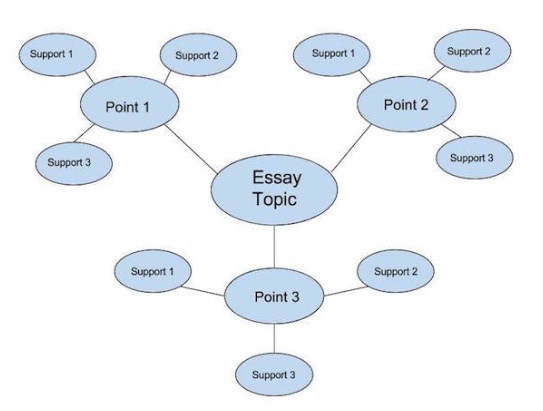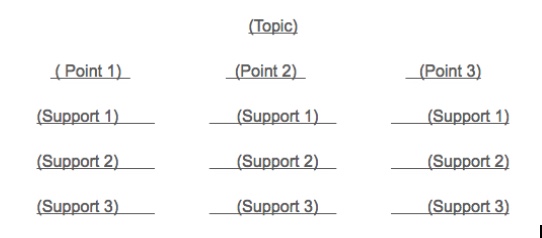High School English I: Composition Study Guide for the STAAR test
Page 1
General Information
There are no multiple-choice questions involved in the “Composition” part of the English I test, so practice question and flashcard practice are not needed. This study guide should give you a good idea of what you will be expected to do. For further preparation, try writing to several prompts for practice using the guidelines below.
The Composition part of the STAAR® English I test only contains one open-ended question: it is a prompt for you to write a composition. Your job is to read the prompt and use the skills you learned in English I to write the composition described in the prompt. Your composition score will be used to supply 24% of your total score on the English I test. And, remember, to graduate from high school in the State of Texas, you must achieve a level II or III on the English I test, according to this description of score levels:
- III—Advanced Academic Performance
- II—Satisfactory Academic Performance
- I—Unsatisfactory Academic Performance
You may remember taking a similar composition test in seventh grade. This one is somewhat similar, but the prompt will be more complex and involved, and the quotation used in it is written at a level requiring English I comprehension skills. The subject on which you are asked to write is also more sophisticated.
Your English I composition score will be based on how well you do these things, which will be stated in the prompt you receive:
- Clearly state your thesis.
- Organize and develop your ideas effectively.
- Choose your words carefully.
- Edit your writing for grammar, mechanics, and spelling.
Released 2017 test prompt, reprinted with permission; ©The Texas Education Agency and accessible at https://tea.texas.gov/student.assessment/staar/
All of the strategies in this study guide speak to doing the above tasks successfully. Be sure you understand and can do these steps, in this order, on the day of the test. You should be familiar with all of them from writing instruction in your English I class. Remember the writing process instruction: Plan, Draft, Revise, Edit, and Publish?” Well, you’ll do all of that during the composition. The publishing part will be simply turning in the test. We’ll go through all of these steps and remind you of their important components.
Plan
Good writers know that the best outcome starts with the best planning. No published author just sat down and said, “I’m going to write a book today,” and then did it. A lot of planning goes into writing a strong text, which is why it’s a critical step and not one to overlook. Although it may seem “pointless” or a “waste of time,” it’s really not, and planning will yield better final results for you. The essay prompts to which you will be responding on the STAAR® test are “on-demand,” which means your planning time is somewhat limited. But that doesn’t mean you should skip it entirely.
The Prompt
The prompt is the question or topic you are being asked to address in a written response. The format of the prompt includes an information box, statement, directions, and guidelines. You should read and refer back to all of these components as you prepare to write and during the writing process itself. Double-check your work against the prompt—are you doing everything you are being asked to do? If not, what’s missing, and how or where can you incorporate it into your writing plan? This is why planning ahead of time is important: to ensure that you have covered all required components before it’s too late. In the English I assessment, you will face an expository prompt. Read all of the text on the page and understand the big picture before you dive into writing.
The Information Box
The information box sets up a scenario for you, as a writer. It may provide background information about a particular topic or set up a scenario you are to address in your response. The information in this box is important, and everything that you write about in your response should somehow tie back to it.
The Statement
The statement is usually a sentence—though it is sometimes worded as a question—that captures the essence of the information provided in the information box. The directions instruct writers to “Think carefully about this statement/question.” Your thoughts on this statement or your answer to the question should be the guiding focus of your response to what was presented in the information box.
The Direction Sentence and Guidelines
The direction sentence is your assignment—it’s what the test makers want you to do with the information they gave you in the information box. The directions tend to be simple, “Write an essay explaining ____.” It is the guideline section that will serve as your checklist for planning and writing. The guidelines tell what to include in your response, and you should use them in your planning and writing to ensure that you are doing everything that has been asked of you.
Your Plan
The first step in the plan is to figure out what on earth you are actually supposed to be doing. This means unpacking the prompt and making sure that you identify all of your responsibilities as a writer. Circle the verbs in the direction sentence and guidelines: what are you being asked to do? Then underline words that explain what you are supposed to do with those verbs. Here’s an example of a typical STAAR® English I Writing prompt and what your prompt might look like after you have circled and underlined the important components:
\(\require{enclose} \enclose{circle}{\text{Write}} \text{an}\; \underline{\text{essay}} \;\text{explaining... (topics will vary).}\)
\(\text{Be sure to —}\)
\(\enclose{circle}{\text{Clearly state}} \;\text{your}\; \underline{\text{thesis}}.\)
\(\enclose{circle}{\text{Organize}}\;\text{and} \; \enclose{circle}{\text{develop}} \;\text{your}\; \underline{\text{ideas}} \;\text{effectively}\)
\(\enclose{circle}{\text{Choose}} \;\text{your} \; \underline{\text{words}}\; \text{carefully}.\)
\(\enclose{circle}{\text{Edit}} \;\text{your writing for} \; \underline{\text{grammar}}, \; \underline{\text{mechanics}}, \text{and} \; \underline{\text{spelling}}.\)
Released 2017 test prompt, reprinted with permission; ©The Texas Education Agency and accessible at https://tea.texas.gov/student.assessment/staar/
The next step in your plan should be to brainstorm your ideas about the information presented in the information box and your thoughts on the statement or question provided. Don’t worry about the order of ideas or writing in complete sentences. Just get your ideas down and sort them out later in the next phase of planning. You may also decide in the next stage that a few of these brainstormed notes are not really appropriate and choose to cross them off and not use them. That’s perfectly fine, too, so don’t worry too much about what you list as you brainstorm.
When you have brainstormed your ideas about the topic and addressed the statement or question, think about how you can use that information to follow the directions and “write an essay.” This part of the planning stage of your writing can take many forms and should be something that will be useful for you. No one looks at or grades your planning work, so it really is just to help you organize your thoughts and prepare your plan of attack. Here are some ideas for different types of planning and organizational approaches. Use what works best for you.
Outlines
An outline gives a very detailed structure to the ideas you want to include in your response. Using capital letters, lower case letters, and sometimes numbers, outlines clearly show what idea is coming first, the evidence you have to support that idea, what the next paragraph will be about, and so on. Outlines don’t have to go into crazy detail for this assignment, but the more detailed it is, the more organized your response will be if you use it as a guide when you are writing and refer to it often.
Notes
In your brainstorming process, you should jot down notes of what comes to mind as you consider this topic. Once you have exhausted your brainstorming, review your notes and code them in some way based on their importance. This may be a numbered list that can then be translated into an outline, or it may be as simple as starring the points you think are especially relevant and crossing out the ones that may not address the topic as clearly. Again, use methods that work for you and your learning style. If that means lines that criss-cross the page and arrows that direct you from here to there to way over there, that’s fine, as long as you can follow and make sense of them.
Graphic Organizers
Graphic organizers, like the one pictured below, can help a writer “see” the connections between his or her ideas as the writer works to figure out how everything should come together. Graphic organizers provide structure and organization before a writer starts trying to form cohesive paragraphs. They help to organize and classify ideas so that the writer can develop the connections he or she will need to make for the reader to understand the text’s message.

Lists
The listing approach to organization is similar to the outline, but less formally structured. As you can see in the sample provided, the main topic is listed at the top. In this case, it would be your answer or thoughts about the statement provided in the prompt. A great thing to fill in there is your thesis statement. Then the main points are listed; these are what the topic of each body paragraph will be. The sample shows three, but you may have more or less as you see fit. Three is usually a good “rule of thumb” as it helps you create a classic five-paragraph essay (introduction paragraph, three body paragraphs, a conclusion paragraph). Below each main point are spots for the support or evidence you will use to convince your reader that you know what you are talking about. Again, three is a guiding number, not a hard and fast rule or requirement.

All Study Guides for the STAAR test are now available as downloadable PDFs